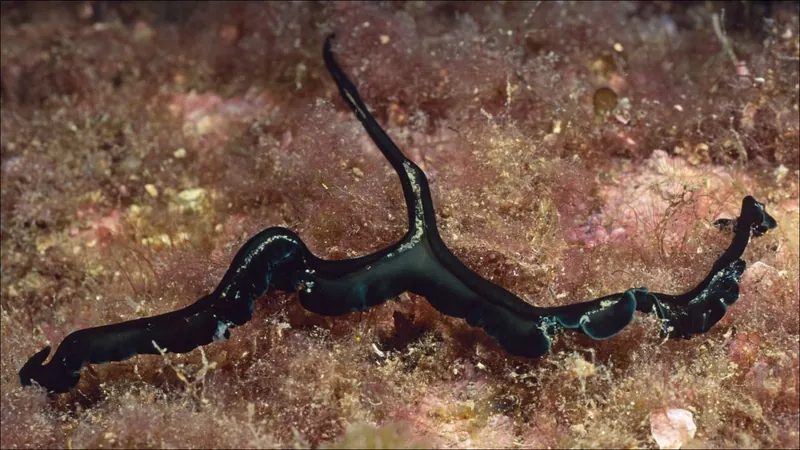
German Breakthrough: Revolutionary Method to Store Solar Energy Chemically!
2024-12-02
Author: John Tan
Introduction
In an exciting development for renewable energy, researchers at Johannes Gutenberg University Mainz (JGU) and the University of Siegen in Germany have made a significant breakthrough in solar energy storage. This innovative technology allows solar energy to be stored chemically, potentially for weeks or even months, transforming how we harness renewable energy.
The Solar Energy Challenge
Every day, an enormous amount of solar energy hits the Earth—enough to power humanity for over a year! However, despite improvements in solar panel efficiency, which have seen energy conversion rates rise to over 20%, the challenge remains: how do we store this energy for later use when the sun isn't shining? Current systems, primarily relying on lithium-ion batteries, can only hold energy for short periods (2 to 4 hours), and other methods like pumped hydro energy storage require vast amounts of space and can be costly.
The Breakthrough: Photoswitches
The team of German researchers has tackled this problem by utilizing specialized molecules called photoswitches, which can store solar energy in chemical bonds. This method beneficially uses heat, which accounts for about 50% of global energy consumption, and is currently sourced mainly from fossil fuels. The International Energy Agency notes that the potential for solar energy in heating applications is largely untapped.
Innovative Energy Harvesting
By employing an indirect light harvesting method akin to the natural processes of photosynthesis, the researchers have made remarkable advancements. The photoswitches used in this study can absorb sunlight more effectively, allowing for a significant leap in energy storage efficiency—over ten times better than previous models. This new system decouples the absorption and storage of solar energy, drawing in visible light through a sensitizer, which then transfers energy to the photoswitches.
Expert Insight
Professor Christoph Kerzig, one of the lead researchers, explained, "By doing so, we could substantially push the limits of light harvesting while also improving how we convert light into stored chemical energy." This groundbreaking research builds on prior work that faced limitations in activating the photoswitches solely through UV light.
Potential Applications
The implications of this technology are vast, potentially paving the way for not only residential heating solutions but also large-scale energy storage systems. The team’s findings were published in Angewandte Chemie and have garnered exceptional reviews from the scientific community, being classified as a Hot Paper for its remarkable impact on energy conversion research.
Minimizing Energy Loss
What’s more, this approach minimizes energy loss—a critical factor in efficiency. Unlike existing technologies, which may require multiple steps to convert sunlight into usable energy, this process uses sunlight directly to create lasting chemical energy. It’s an exciting prospect for both residential and industrial applications aiming for sustainability.
Innovations in Heat Storage
In addition, multiple companies are exploring innovations in harnessing solar energy for heating. Electrified Thermal Solutions and initiatives by Stanford's Mark Z. Jacobson emphasize the use of heat-storing fire bricks. While these projects are promising, the German researchers' method could offer a more efficient way forward by simplifying energy conversion.
Conclusion
As the world moves toward addressing climate change and energy storage challenges, this German advancement may represent a golden opportunity for a cleaner, more sustainable future. By efficiently converting sunlight into chemical bonds, they may change the landscape of renewable energy utilization forever. The future looks bright!


 Brasil (PT)
Brasil (PT)
 Canada (EN)
Canada (EN)
 Chile (ES)
Chile (ES)
 España (ES)
España (ES)
 France (FR)
France (FR)
 Hong Kong (EN)
Hong Kong (EN)
 Italia (IT)
Italia (IT)
 日本 (JA)
日本 (JA)
 Magyarország (HU)
Magyarország (HU)
 Norge (NO)
Norge (NO)
 Polska (PL)
Polska (PL)
 Schweiz (DE)
Schweiz (DE)
 Singapore (EN)
Singapore (EN)
 Sverige (SV)
Sverige (SV)
 Suomi (FI)
Suomi (FI)
 Türkiye (TR)
Türkiye (TR)